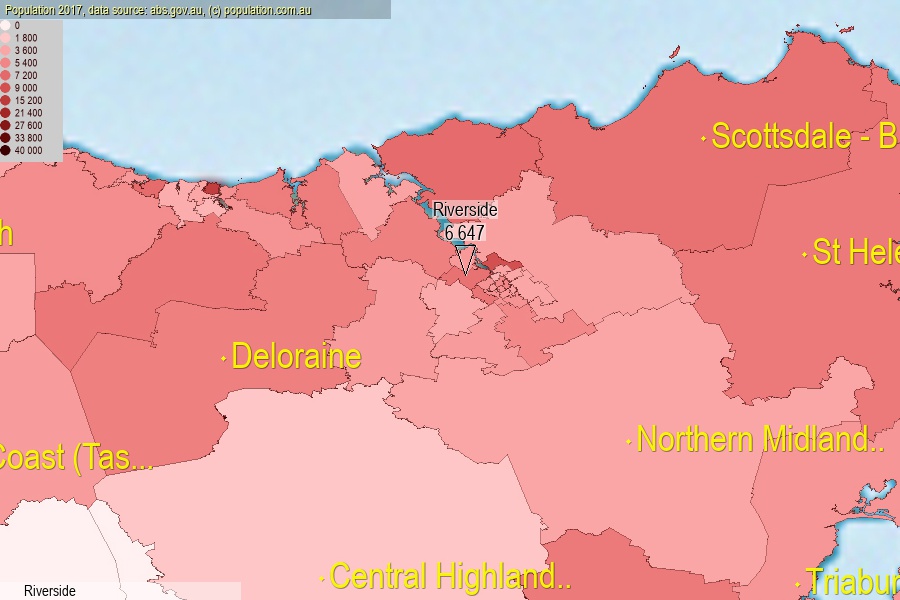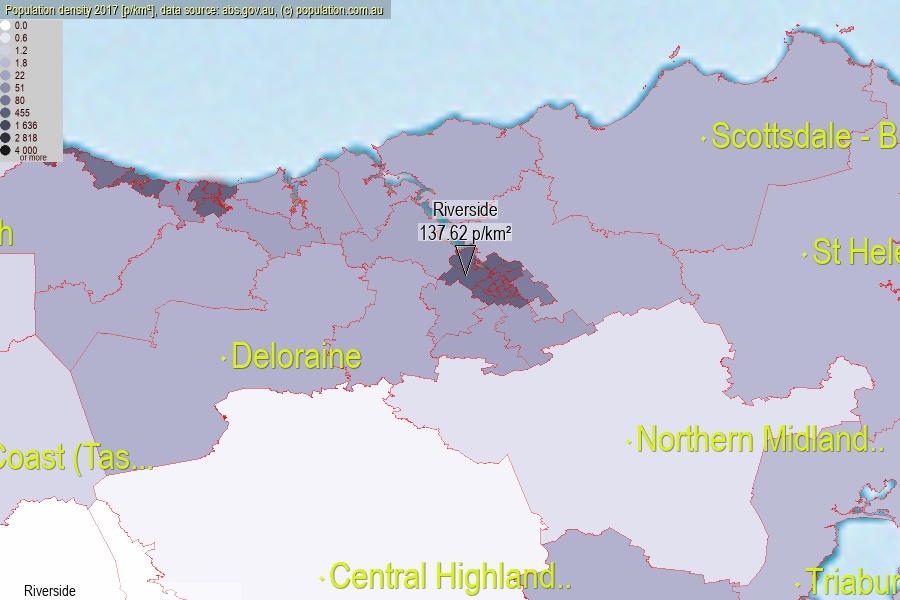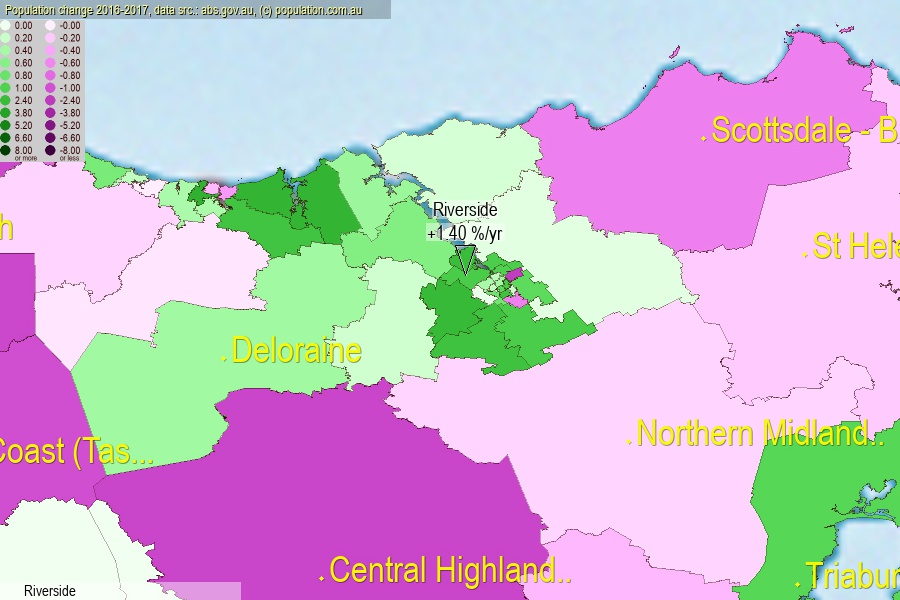 population.com.au
population.com.auLast official estimated population of Riverside (as Statistical Area Level 2) was 6 647 people (on 2017-06-30)[2]. This was 0.03% of total Australian population and 1.262% of TAS population. Area of Riverside is 48.30 km², in this year population density was 137.62 p/km² . If population growth rate would be same as in period 2016-2017 (+1.4%/yr), Riverside population in 2025 would be 7 431. [0]



Click to enlarge. Riverside is located in the center of the images.
Population [people], population density [p./km²] and population change [%/year] [2]
View borders » (new window) [4]
[1991-1992] +4.48 %/Yr.
[1992-1993] +2.78 %/Yr.
[1993-1994] +2.26 %/Yr.
[1994-1995] +2.41 %/Yr.
[1995-1996] +1.95 %/Yr.
[1996-1997] +2.03 %/Yr.
[1997-1998] +1.93 %/Yr.
[1998-1999] +2.04 %/Yr.
[1999-2000] +1.42 %/Yr.
[2000-2001] +2.06 %/Yr.
[2001-2002] -0.03 %/Yr.
[2002-2003] +0.49 %/Yr.
[2003-2004] +1.23 %/Yr.
[2004-2005] -0.18 %/Yr.
[2005-2006] +0.93 %/Yr.
[2006-2007] +0.60 %/Yr.
[2007-2008] +0.72 %/Yr.
[2008-2009] +1.94 %/Yr.
[2009-2010] +0.99 %/Yr.
[2010-2011] +1.08 %/Yr.
[2011-2012] -0.14 %/Yr.
[2012-2013] +0.71 %/Yr.
[2013-2014] +0.65 %/Yr.
[2014-2015] +1.05 %/Yr.
[2015-2016] +0.46 %/Yr.
[2016-2017] +1.40 %/Yr.
[0] Calculated with linear interpolation from officially estimated population
[1] Read more about SA2 and Australian Statistical Geography Standard (ASGS) on abs.gov.au
[2] Population data from Australian Bureau of Statistics (Population and density: 2017; change: 2016-2017)
[3] Digital Boundaries: Australian Statistical Geography Standard (ASGS) 2016.
[4] Border coordinates are simplifyed using Ramer-Douglas-Peucker algorithm.